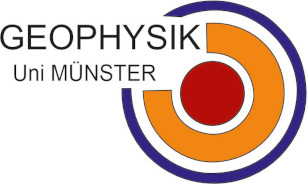Rhum-Rum
As part of the RHUM-RUM project (Réunion Hotspot and Upper Mantle – Réunions Unterer Mantel) we investigate the upwelling plume beneath the volcano Piton de la Fournaise, located on the island La Réunion in the Indian Ocean 800 km east of Madagascar, from the upper mantle down to the core-mantle boundary. We use teleseismic events, where the distance between the earthquake the recording array is between 80 and 180 deg. Because of the sparse distribution of stations on and around La Réunion, we do not use direct P- or S-waves but the PP/SS phase, which is reflected once off the surface in the midway between source and receiver. Most of the sensitivity of this phase is concentrated at the reflection point and therefore provides information around this area and can be located both on continents and in the oceans.
PP/SS waves can not only be reflected off the surface but also deeper seismic discontinuities, such as the 410 or 660 km discontinuities. These two phase transitions from olivin to wadsleyite at 410 km depth and from ringwoodite to perovskite and magnesiowüstite at 660 km depth bound the so called mantle transition zone. If hot material, such as a mantle plume, intersects this transition zone, we expect the 410 km discontinuity to be lowered and the one at 660 km depth to be elevated compared to the global average due to their Clapeyron slopes. The differential travel-time between the PP/SS phase and signals reflected off the discontinuities in 410 and 660 km depth (called precursors) can be translated into discontinuity depths and therefore provides information whether hot material might be present in the mantle transition zone or not.
The RHUM-RUM project (https://www.rhum-rum.net) is a German-French collaboration, which performed a passive seismic experiment using Ocean Bottom Seismometers (OBS) and land stations to illuminate the mantle plume beneath the Piton de la Fournaise volcano from crust to core. Between October 2012 and October 2013, 57 OBS were deployed over an area of 2000x2000 km2 around La Réunion. This has been the biggest OBS experiment worldwide so far. Additional land stations can be found on the surrounding islands, such as Mauritius /Seychelles or Madagascar. The data obtained by this experiment are currently being prepared for further studies such as anisotropy in the upper and lower mantle, tomography and inversion, and receiver function analysis. Not only the hotspot, but also its interaction with the surrounding ridges of the Indian Ocean is in the centre of interest.


